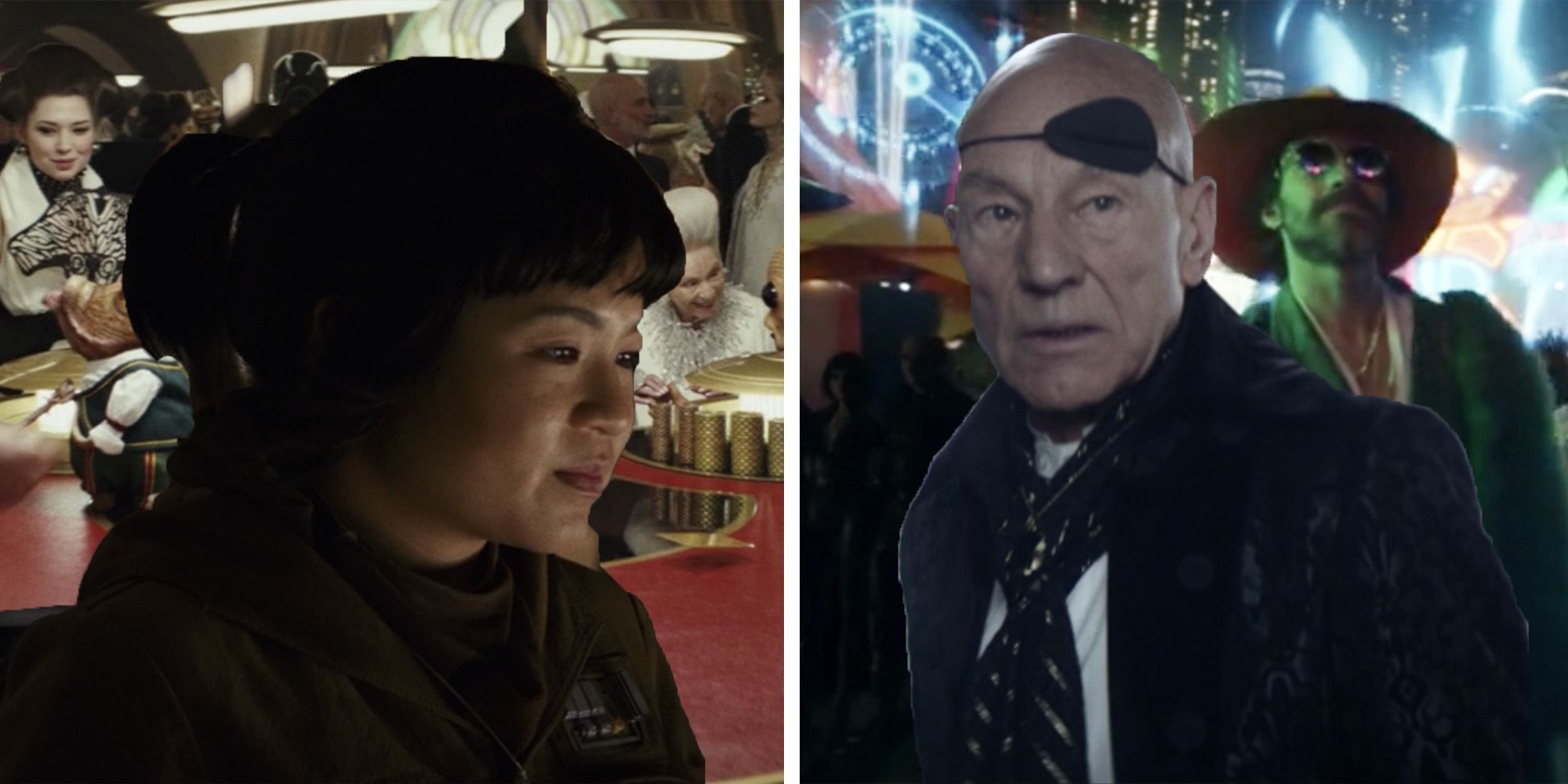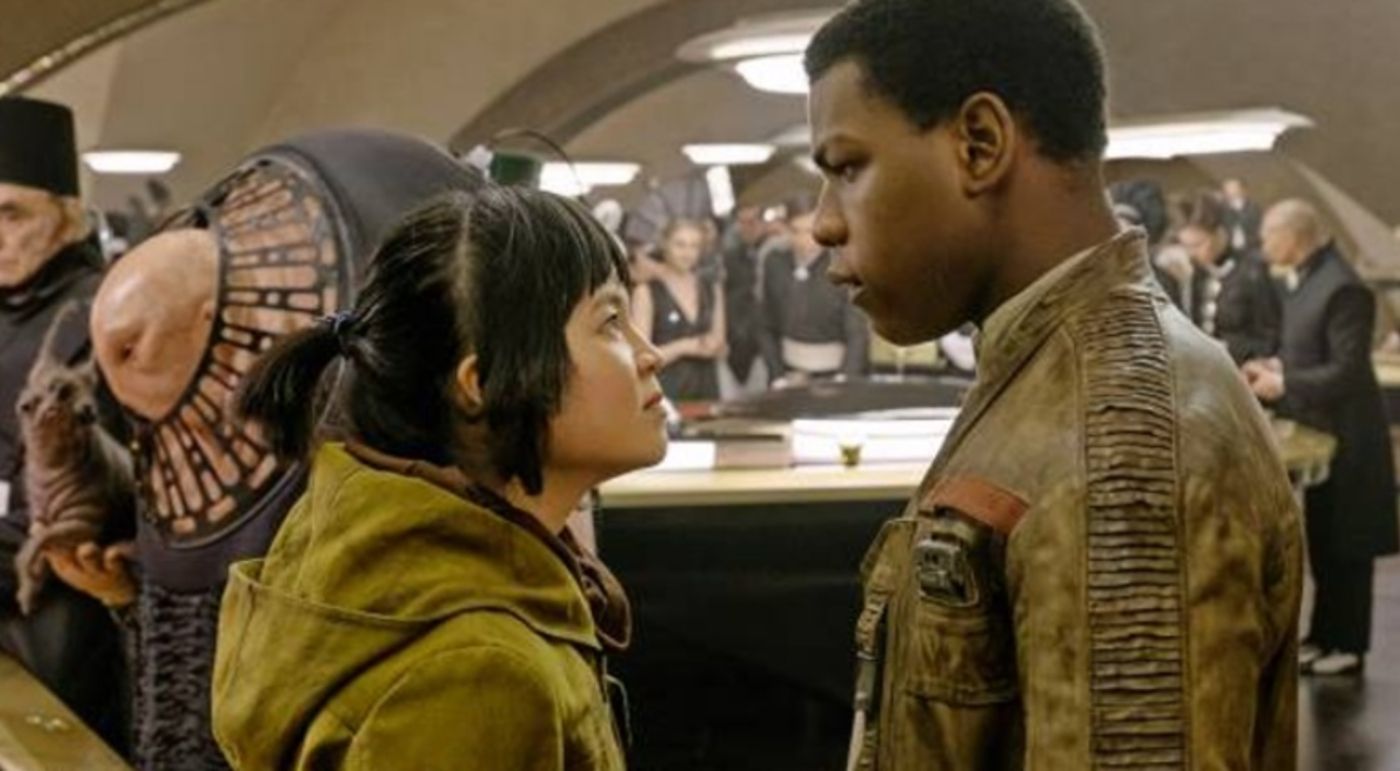
In Star Trek: Picard’s fifth episode, “Stardust City Rag,” the crew of La Sirena seeks Dr. Bruce Maddox (John Ales) for clues about the mystery of Data’s (Brent Spiner) daughter, Soji (Isa Briones), and their journey brings them to Freecloud, a casino planet that is just like Canto Bight from Star Wars: Episode VIII - The Last Jedi, where Finn (John Boyega) and Rose (Kelly Marie Tran) seek the master codebreaker, DJ (Benicio Del Toro). The crew beams down to Freecloud’s Stardust City, where they encounter the world’s seedy underbelly, much the same way that Finn and Rose did in The Last Jedi’s B-plot.
Star Trek: Picard often muddies the economics of the society set up in Star Trek: The Next Generation, and Freecloud’s hyper-mercantile society seems out of place in Gene Roddenberry’s utopic future. The world of Star Wars, on the other hand, has portrayed a world with money and politics intertwined, specifically in the prequel trilogy and in Star Wars: The Clone Wars. Whether “a long time ago in a galaxy far, far away” or in the “final frontier,” the depictions of greed and war profiteering populate these science fiction space opera franchises.
What are the similarities between Star Trek: Picard’s Freecloud and The Last Jedi’s Canto Bight, and what do the depictions of these planets mean?

In The Last Jedi, Rose calls Canto Bight a “terrible place, filled with the worst people in the galaxy.” Finn at first is delighted with the Canto Bight casino’s opulence, but Rose soon explains that the rich patrons are war profiteers who sell weapons to the villainous First Order. The set design is much like a casino on a modern-day cruise ship with gold-bedecked walls and well-dressed alien species throwing dice and drinking. Rose and Finn eventually get the best of the place by releasing the fathiers, racing beasts of burden, who trample through the casino.
In Star Trek: Picard, when Jean-Luc Picard’s (Patrick Stewart) crew approaches the Freecloud, they are assaulted with holographic pop-up ads, and Seven of Nine (Jeri Ryan) states that the planet is where the Fenris Rangers store their money, establishing Stardust City as a place founded on mercantilism. The main villain of the crew’s Stardust City adventure is Bjayzl (Necar Zadegan), who carves up former Borg drones for parts that she sells for profit. The set design of Freecloud’s streets looks like a cyberpunk exaggeration of New York’s Times Square, and the interiors reverberate with percussive dance music. At the end of the episode, Seven of Nine kills Bjayzl and wields dual phaser rifles, rampaging the rest of the dance club.
In both depictions of mercantile planets, the creators focus on how societies based on money and greed lead to violent oppression, and in both cases, the protagonists disrupt the status quo – but only in a limited, violent way. What remains at the end of Star Wars: The Last Jedi is a continued system of monied elites, who would surely recover from the fathier stampede, and Seven of Nine’s phaser rifles can’t topple a system that supports a gruesome profiteer like Bjayzl at the end of Star Trek: Picard. Science fiction’s power as a genre allows creators to dramatize what plagues modern society, yet even in these famous sci-fi franchises, money’s corruptive influence remains a persistent problem for even the most celebrated heroes like Picard.
from ScreenRant - Feed https://ift.tt/39yYr4B





No comments: